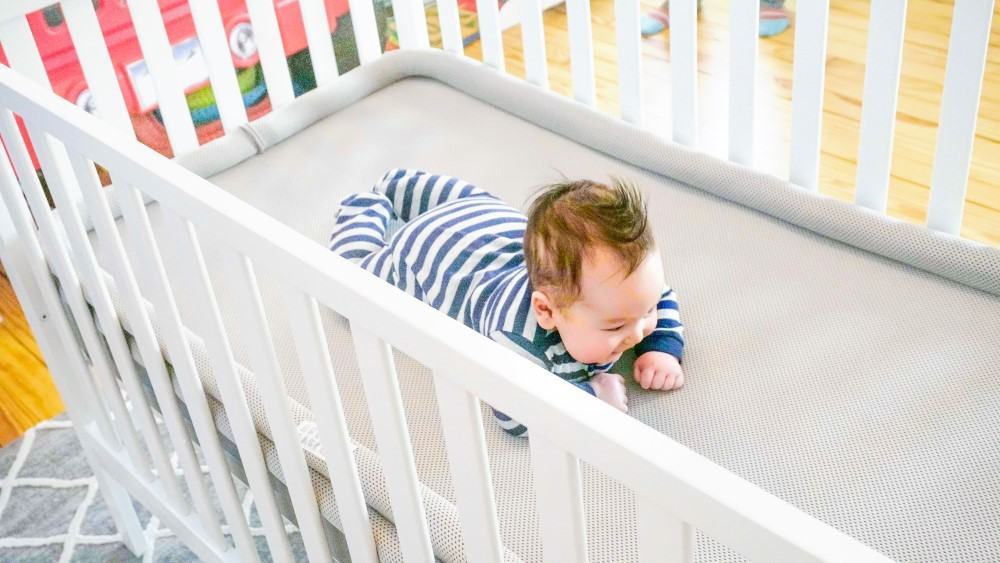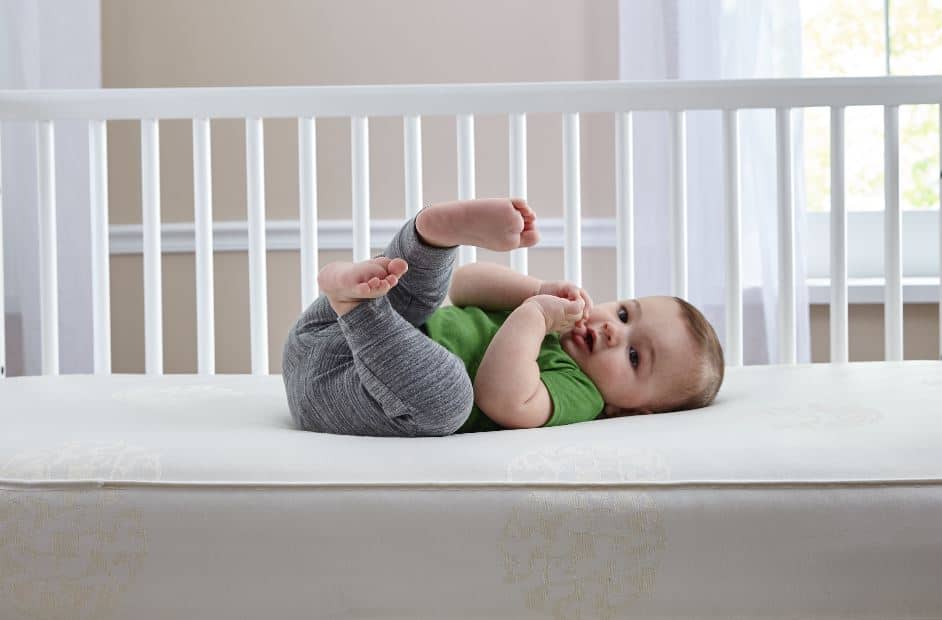As you probably already know, babies and children love to sleep, and they sleep a lot!
The environment in which they sleep in has to ensure that babies get sufficient rest and are kept safe. After all, most of their growth and physical development will take place as they slumber.
The sleeping environment is one of the more important decisions for every parent. Pick wrong, and it could be hazardous to your child.
Synthetic foam mattresses are produced with Volatile Organic Compounds (VOCs) that include resins, solvents and adhesives while flame retardant chemicals that are commonly added to every mattress contain harmful chemicals that are constantly off-gassing.
In recent years, the health risks of these mattresses have been studied and synthetic foam mattresses have unsurprisingly been linked to illnesses such as asthma, lung infections, auto-immune disorders and allergies.
Picking A Mattress

So with the myriad of options out there, how does one go about picking a mattress for your precious baby?
First, a mattress cover is absolutely essential. It should be soft on the sensitive baby skin to avoid any abrasions or irritation, and of course, waterproof and easily washable. You’ll be cleaning a lot of sheets and mattress covers since babies tend to wet beds, a lot!
Then, a baby mattress should be much firmer than adult mattresses to support your baby’s spine. Firm mattresses also avoid any risk of a blocked or impaired airway as the baby tosses and turns. A general rule of thumb is that “if you like the firmness, it’s probably too soft”.
Hypoallergenic and organic materials give natural resistance to dust mites, mold, mildew and other nasties that can trigger allergies or result in asthma and sinus problems. Prevention is much better than cure, and causing respiratory issues in a newborn is not a good idea!
Also, the mattress should be breathable and well-ventilated. Given that babies spend the majority of their time in their crib, poorly-ventilated mattresses might cause rashes and other skin problems, especially in a hot and humid climate.
What To Avoid!
Polyester – While some of the cheapest options, polyester can lead to health issues with the respiratory system and skin rashes because of the chemicals used in the manufacturing process.
The production process also generates water-borne emissions of dissolved solids, acids, iron and ammonia among other nasty chemicals.
Polyurethane – One of the most common fillings in baby mattresses, polyurethane foam is made from fossil fuels and requires a ton of energy to produce. This foam is also highly flammable and releases seriously toxic chemicals if it burns. This leads to it almost always treated with flame retardant chemicals to comply with fire safety laws.
Flame Retardant Chemicals – Each mattress has to meet the fire safety standards before being sold. This leads to harsh flame retardant chemicals like antimony and boric acid being added to the manufacturing process of each mattress.
These chemicals are extremely harmful and can lead to a whole bunch of health problems. They cannot fully bind to the core materials of the mattress and are released over time right into the air your baby lives and breathes!
Chemical flame retardants aren’t necessary in any mattress, given that natural materials can be just as effective for meeting flammability standards.
Polyvinyl chloride (PVC) – A plastic coat sometimes is added to baby mattresses to protect it from stains and moisture. This is usually made from PVC plastic, one of the most environmentally unfriendly plastics around.
Containing a variety of harmful chemicals like chlorine gas, ethylene dichloride, vinyl chloride, mercury, and dioxins used in its manufacture, these chemicals are then released into the surrounding environment.
PVC also contains phthalates, a carcinogenic dioxin that constantly is off-gassing. Phthalates and their metabolites are biologically active once absorbed. Adults have the capacity to metabolize and eliminate Phthalates but the diminutive bodies of infants are less efficient at doing this and are more vulnerable to their effects. Many countries have started banning the use of phthalates in the manufacture of children’s products and toys.
Synthetic Latex – Watch out for manufacturers that claim 100% pure latex, sometimes this means the latex is a blend of natural and synthetic, whilst other times it just means pure synthetic. Synthetic latex has a stronger, more abrasive odor and is made with chemicals and generally is less durable than natural latex.
Why Organic, Natural Latex?
Now you have the skinny on what not to use, what about what’s left to use? 100% pure organic, natural latex might be the answer to keeping the baby happy and healthy.
Safe and Non-Toxic
Getting a high-quality organic latex mattress will be completely safe for babies. Any mattress that is certified with a reputable control union such as GOLS (Global Organic Latex Standards) will ensure that the mattress contains only organic material with no harmful chemicals or contents added.
Firm and Durable
Latex has an almost immediate rebound rate, which is the rate at which the mattress returns to its natural state. This means more support for your baby’s body and spine. And while keeping your spine in proper alignment, pressure is relieved whether you sleep on your back, side or stomach.
Natural latex mattresses will outlast any other type of foam and maintain its springiness and shape for many years. Rubber is a durable, resilient material that naturally rebounds, maintaining its original shape without sagging or indentations.
They have an average lifespan of 12 to 20 years, significantly longer than other mattresses that have to be replaced every 5 to 7 years.
Hypoallergenic
Mattresses are breeding grounds for microscopic organisms such as bacteria, fungi and dust mites. Dust mites are one of the leading causes of bedroom allergies. These microscopic bugs live in our bedding, mattresses, pillows and carpets.
Mold, mildew and other nasties can also collect in the bedding and mattress and give skin and respiratory problems. Latex is naturally antimicrobial, repelling harmful organisms and resulting in cleaner, healthier air.
Breathable
Unlike foam mattresses, natural latex has an open-cell structure, effectively permitting constant airflow and keeping the mattress cool. In addition, chemicals in synthetic mattresses also cause heat retention, and natural latex contains little to no chemicals.
Naturally Flame Resistant
Latex is naturally fire resistant, as are mattress protectors and covers made from 100% certified organic materials such as wool or cotton. No more nasty flame retardant chemicals for the precious baby to breathe in!
